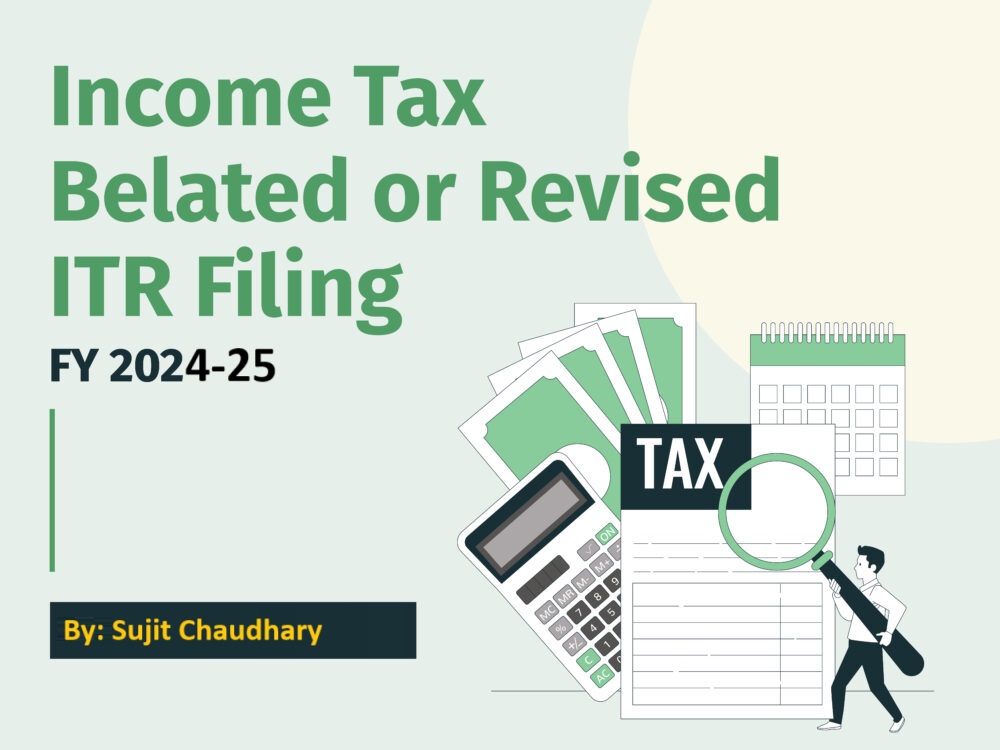Section 54 of the Income Tax Act: Tax Exemption on Capital Gains from Property Sale
Section 54 of the Income Tax Act, 1961, provides a tax exemption on long-term capital gains arising from the sale of a residential property. This exemption applies when the capital gains are reinvested in another residential property. It aims to encourage taxpayers to reinvest in housing and promote real estate growth.
This article explores the eligibility, conditions, and process for claiming an exemption under Section 54.
What is Section 54 of the Income Tax Act?
Section 54 allows taxpayers to claim exemption on long-term capital gains earned from selling a residential property, provided they reinvest the gains in another residential property within a specified timeline.
Eligibility Criteria
- Type of Asset Sold:
The sold property must be a long-term capital asset, meaning it was held for more than 24 months. - Type of Asset Purchased:
The exemption applies only if the reinvestment is made in a residential property. - Time Frame for Reinvestment:
Purchase of a new property: 1 year before or 2 years after the sale of the original property.
Construction of a new property: Must be completed within 3 years from the date of sale.
- Residential Status:
The taxpayer must be an individual or a Hindu Undivided Family (HUF). - Number of Properties:
As per the 2019 amendment, taxpayers can reinvest in two residential properties if the capital gains are less than ₹2 crores. This benefit is allowed only once in a lifetime.
Exemption Amount Under Section 54
The exemption amount is the lower of:
The actual capital gains from the sale of the property.
The amount invested in the new residential property.
Example of Section 54 Exemption
Scenario:
Sale price of the old property: ₹80 lakhs.
Purchase price of the old property (indexed): ₹50 lakhs.
Capital gains: ₹30 lakhs.
Purchase of a new property: ₹25 lakhs.
Tax Calculation:
Exemption claimed: ₹25 lakhs (investment in the new property).
Taxable capital gains: ₹30 lakhs – ₹25 lakhs = ₹5 lakhs.
Conditions and Restrictions
- Ownership:
The new property purchased must be in the name of the taxpayer claiming the exemption. - Holding Period:
The newly purchased or constructed property must be held for at least 3 years. If sold before 3 years, the exemption claimed will be reversed and taxed as short-term capital gains. - Capital Gains Account Scheme (CGAS):
If the taxpayer cannot reinvest the capital gains before the due date of filing the Income Tax Return (ITR), the amount must be deposited in a Capital Gains Account Scheme with a bank.
Steps to Claim Exemption Under Section 54
- Compute Capital Gains:
Calculate the capital gains arising from the sale of the property. - Identify Reinvestment:
Determine whether the reinvestment meets the conditions specified under Section 54. - Deposit in CGAS (if needed):
Deposit unutilized capital gains in the CGAS before the ITR filing deadline. - Report in ITR:
Mention the details of the capital gains and exemption in your Income Tax Return.
Benefits of Section 54
- Tax Relief:
Allows taxpayers to save on long-term capital gains tax by reinvesting in residential properties. - Encourages Housing Investment:
Promotes reinvestment in real estate, contributing to the housing sector’s growth. - Flexibility:
Offers multiple timelines for reinvestment, making it easier for taxpayers to comply.
Key Amendments to Section 54
- Reinvestment in Two Properties:
The 2019 amendment allows reinvestment in two properties if the capital gains are less than ₹2 crores. - Budget 2020 Changes:
The government capped deductions for reinvestments at ₹10 crores for high-value transactions.
Common Mistakes to Avoid
- Incorrect Timelines:
Ensure reinvestment or construction is completed within the specified period. - Non-Deposit in CGAS:
Failure to deposit unutilized capital gains in CGAS may disqualify the exemption. - Incomplete Documentation:
Maintain all purchase, sale, and CGAS receipts to substantiate the exemption claim.
Conclusion
Section 54 of the Income Tax Act is a valuable provision for taxpayers looking to save on long-term capital gains tax by reinvesting in residential property. By understanding the eligibility criteria, timelines, and compliance requirements, taxpayers can effectively utilize this exemption while contributing to the housing sector’s growth.
For personalized advice and assistance, consult a tax professional to navigate the complexities of Section 54.


